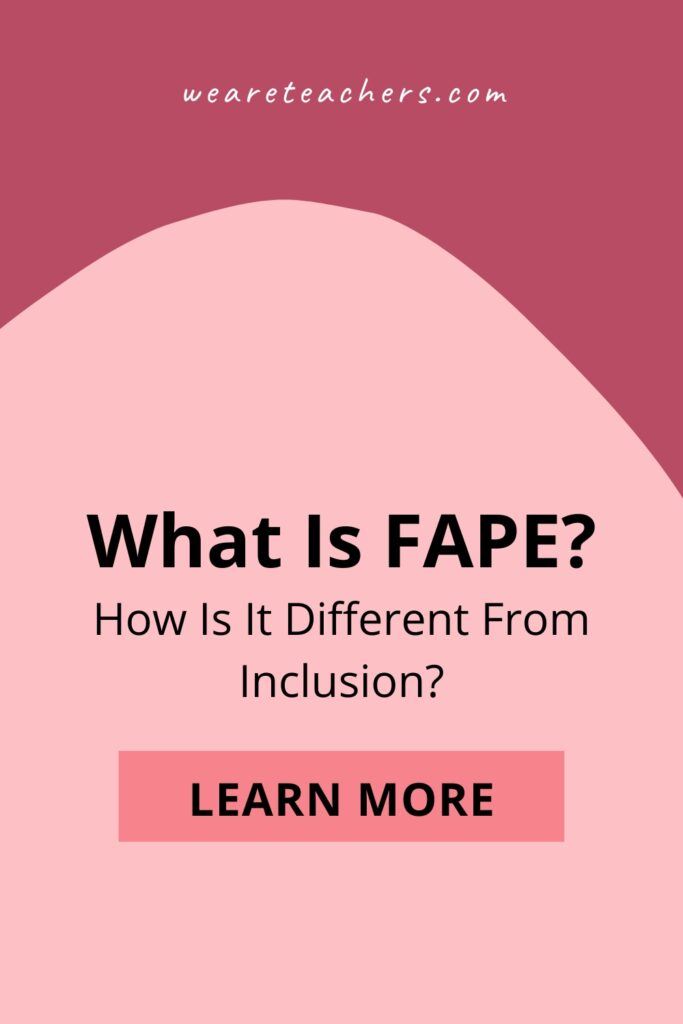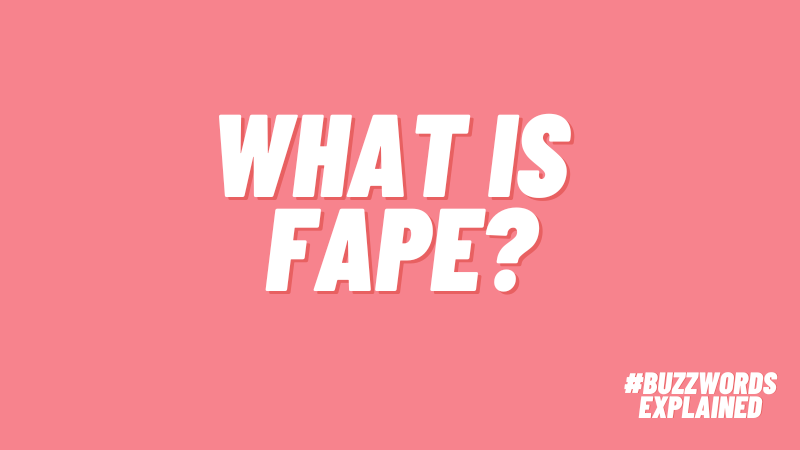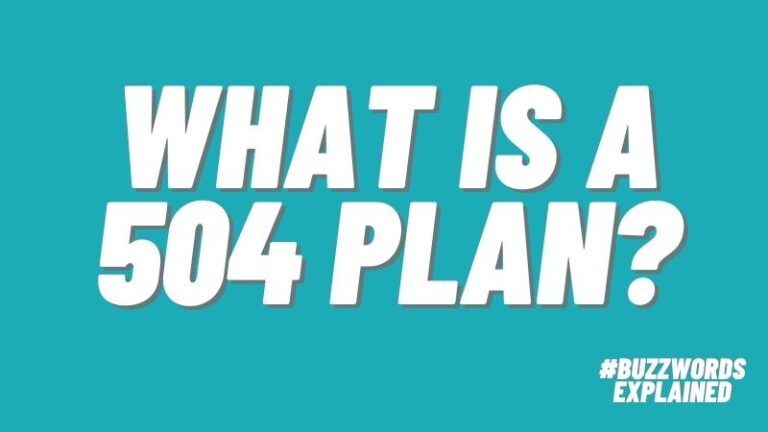Every child who attends public school gets a Free Appropriate Public Education, also known as FAPE. It’s also the deceptively simple idea that special education is built on. So what exactly is FAPE? How is it different from inclusion? And what happens if a school can’t provide it? Read on to learn everything you need to know about FAPE, including answers to commonly asked questions, as well as classroom resources to help support FAPE.
What is FAPE?
The Individuals With Disabilities Education Act (IDEA) outlines what FAPE means for kids with disabilities. In IDEA, the law sets out to make sure that all children with disabilities have FAPE with special education services and supports that meet their unique needs. We want all kids to graduate ready for employment, education, and independent living, and IDEA states that kids with disabilities should receive the same preparation as those without disabilities.
Broken down, FAPE is:
- Free: No cost to parents
- Appropriate: A plan that is designed and planned to meet the child’s needs
- Public: Within the public school setting
- Education: Instruction that is outlined in the IEP
Read more at Wrightslaw.
What does FAPE include?
FAPE includes anything outlined in a child’s IEP.
- Specially designed instruction (time spent being taught by a special education teacher in a resource room, self-contained classroom, general education, or somewhere else).
- Accommodations and modifications.
- Related services like counseling, speech and language therapy, occupational therapy, psychological services, adaptive P.E., among others.
- Supplemental aids and services, like interpreters for students who are deaf, readers for students who are blind, or mobility services for students with orthopedic impairments.
- FAPE also ensures that the district provides each child with a plan that complies with the legal (IDEA) requirements. The plan must use evaluation data to address the child’s needs. And the plan should be managed so that the child can make progress in their least restrictive environment.
The quality of education for students with and without disabilities must be comparable. This means that teachers for students with disabilities must be specially trained, just like teachers for all kids are trained. Facilities and classrooms for students with disabilities must be comparable with the materials and equipment to support students’ education.
Beyond academics, students with disabilities must be provided with the same opportunity to participate in extracurriculars, physical education, transportation, and recreation as their peers.
Does FAPE apply to Section 504?
Yes. Under Section 504 of the Rehabilitation Act of 1973, students with disabilities have the right to participate in activities that receive federal funds, including school. According to Section 504, an “appropriate” education is one that may be regular class or special education classes for all or a portion of the day. It can be at home or at a private school and may include related services. Essentially, education services should be provided to all students, whether they have a disability or not.
Read more: What Is a 504 Plan?
Read more: 504 and FAPE
Who decides a child’s FAPE?
FAPE generates a lot of discussion at IEP meetings. (Usually it’s the A in FAPE that gets the most attention.) Since the IEP defines what FAPE looks like, FAPE looks different for each child. Each district must meet the educational needs of students with disabilities to the same extent they meet the needs of kids without disabilities.
To that end, a school district must provide:
- Access to general and special education services.
- Education in the general education setting as much as possible.
At times, parents can have unrealistic expectations of what FAPE means for their child. IDEA is not designed to provide students with disabilities more than their peers. It is not about providing the “best” education or an education that “maximizes the child’s potential.” It’s about providing an appropriate education, at the same level or “equal to” that which students without disabilities receive.
What happens if a parent disagrees with FAPE in the IEP?
The IDEA law lays out ways for parents to disagree with the decisions put into their child’s IEP. In the meeting, the parent can write “I consent to …” or “I object to …” and their reasons on the IEP signature page. Parents may also write a letter explaining what they think is inappropriate about the IEP.
Read more: Who is responsible for providing FAPE?
What happens if a school can’t provide FAPE?
A school district is responsible for providing FAPE to all the students who enroll. That means that if a child can’t be accommodated within their home school, or their least restrictive environment (LRE) is a separate school, the district must pay for the student to attend that school. Or if the team decides that the LRE is the child’s home, they are still obligated to provide FAPE, even if it’s through a homebound special education teacher.
How has FAPE evolved over time?
When IDEA was first authorized, the focus was on getting kids with disabilities into school (access) and compliance with the law. Since then, many a legal case has been debated over FAPE. Board of Education of Hendrick Hudson Central School District vs. Amy Rowley (458 U. S. 176) defined free appropriate public education as “access to education” or a “basic floor of educational opportunity.”
Since then, No Child Left Behind (NCLB; 2001) required states to adopt high academic standards, and to test all children to determine if they have mastered the standards. In 2004, when IDEA was reauthorized, the focus was less on access to education and more on improving outcomes for kids with disabilities.
In 2017, in Endrew F. v. Douglas County, the Supreme Court did not reverse the Rowley standard of FAPE, but did clarify that if a student is not fully in general education, then FAPE is even more about the child’s unique situation.
How is FAPE different than inclusion?
For a child with a disability, there are two fundamental requirements: FAPE and LRE. A child’s IEP will indicate how much time (all to none) they are included in general education and how much of their education is conducted outside of the general education setting.
In Hartmann v. Loudon County (1997), the U.S. Court of Appeals found that inclusion is a secondary consideration to providing FAPE from which a child receives an educational benefit. The focus on inclusion, argued the decision, was recognition that education of the child is more important than the value or social benefit of having children with disabilities interact with nondisabled peers. Put another way, the LRE must consider educating children with disabilities with their nondisabled peers as much as possible, but the most important consideration is where the child will learn best.
Put another way, there is a lot of overlap between FAPE and inclusion, but not every child’s FAPE will be in an inclusive setting.
Read more: What Is Inclusion?
What is the general education teacher’s role in deciding and implementing FAPE?
In the IEP meeting, general education teachers provide insight into how a child is functioning and progressing in the LRE (general education). They can also give suggestions for which accommodations and supports are most beneficial for a particular student. After the IEP meeting, general education teachers work with the special education teachers to monitor the child’s progress and make sure their IEP is being implemented according to plan.
FAPE Resources
The Wrightslaw blog is the definitive place to go to research special education law.
FAPE Reading List
Professional development books for your teaching library:
(Just a heads up, WeAreTeachers may collect a share of sales from the links on this page. We only recommend items our team loves!)
Wrightslaw: Special Education Law, 2nd Ed by Peter Wright and Pamela Darr Wright
Wrightslaw: All About IEPs by Peter Wright and Pamela Darr Wright
Picture Books for the Inclusive Classroom
Your students don’t know about FAPE, but they’re definitely curious about the other kids in your class. Use these books with elementary school students to set the tone and teach them about various disabilities.
All Are Welcome by Alexandra Penfold
All My Stripes: A Story for Children With Autism by Shaina Rudolph
Just Ask! Be Different, Be Brave, Be You by Sonia Sotomayor
Brilliant Bea: A Story for Kids With Dyslexia and Learning Differences by Shaina Rudolph
A Walk in the Words by Hudson Talbott
Have questions about FAPE? Join the WeAreTeachers HELPLINE group on Facebook to exchange ideas and ask for advice!
Check out What Is Inclusion in Education for more information on special education and FAPE.


